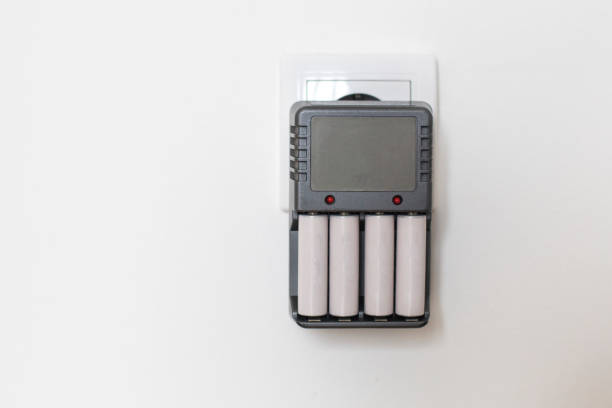Power Inverters: Essential Devices for Energy Conversion
Power inverters are critical components in modern electrical systems, enabling the conversion of direct current (DC) into alternating current (AC). This transformation allows users to operate household appliances, electronics, and machinery using energy stored in batteries or generated by renewable sources like solar or wind power. Whether you're living off-grid, traveling in an RV, or seeking a backup power solution for your home, power inverters are essential tools to harness and use energy efficiently.
What Is a Power Inverter?
A power inverter is an electrical device that changes DC electricity into AC electricity, which is the standard form used in homes and businesses worldwide. DC power is often stored in batteries or produced by renewable energy sources such as solar panels or wind turbines. While DC power is useful for battery charging and specific applications, most modern appliances, including refrigerators, televisions, computers, and industrial machinery, require AC power.
The process of inversion involves converting the low-voltage DC into the standard high-voltage AC required for everyday use. Inverters also regulate the voltage and frequency to match the specifications of the appliances being powered, ensuring they operate correctly and safely.
Power inverters are found in various settings, from off-grid homes and backup power systems to RVs and vehicles. They play a pivotal role in making renewable energy accessible for day-to-day use and ensuring a stable, reliable power supply in areas with intermittent grid access.
Types of Power Inverters
There are several types of power inverters, each designed for specific needs. The two primary categories are based on the type of output waveform: pure sine wave and modified sine wave inverters.
Pure Sine Wave Inverters
Pure sine wave inverters produce a smooth, consistent AC output that closely mimics the electricity supplied by the utility grid. These inverters are ideal for powering sensitive electronics, such as computers, medical equipment, and high-efficiency appliances. The clean waveform prevents damage or malfunction of modern appliances that rely on precise power quality.
While pure sine wave inverters are generally more expensive than modified sine wave models, they are highly efficient and provide a safe, stable power supply for all types of devices. They are the preferred choice for users with high-end electronics or critical systems that require uninterrupted, reliable power.
Modified Sine Wave Inverters
Modified sine wave inverters, as the name suggests, produce a stepped or squared waveform that approximates a pure sine wave but with noticeable differences. These inverters are less expensive and suitable for powering simple devices like lights, fans, and older appliances. However, they are not recommended for sensitive electronics like computers, televisions, or audio equipment.
Devices powered by modified sine wave inverters may experience inefficiencies, noise, or potential damage over time due to the irregular waveform. Despite these drawbacks, modified sine wave inverters are often chosen for their affordability and ability to run basic appliances.
Grid-Tie Inverters
Grid-tie inverters are designed for systems that are connected to the electrical grid, such as solar power installations. These inverters synchronize the phase and voltage of the AC output with the grid, allowing users to feed excess electricity back into the grid. This process, known as net metering, allows solar or wind power system owners to earn credits for the energy they contribute.
Grid-tie inverters are ideal for residential and commercial solar setups, but they typically do not work during power outages unless paired with battery storage. For this reason, they are often used in conjunction with hybrid or off-grid inverters for systems requiring backup power capabilities.
Off-Grid Inverters
Off-grid inverters are used in standalone power systems that do not rely on the utility grid. These inverters are typically connected to a battery bank, which is charged by renewable energy sources or generators. Off-grid inverters convert the DC power stored in the battery bank into AC power to run household appliances and electronics.
Off-grid inverters are commonly used in remote locations, cabins, RVs, boats, and emergency backup systems where grid power is unavailable or unreliable. These inverters can be designed to handle small or large loads, depending on the power requirements of the system.
Applications of Power Inverters
Power inverters are used in a wide range of applications, offering a reliable means of converting energy for various devices and settings. Here are some common applications of power inverters:
Off-Grid Living
In off-grid settings, power inverters are essential for powering homes and cabins that are not connected to the electrical grid. Solar or wind power systems generate DC electricity, which is stored in batteries and converted to AC power by an inverter. This setup allows individuals to enjoy modern amenities, such as lighting, heating, refrigeration, and communication devices, without needing a connection to the utility grid.
Emergency Backup Power
In areas prone to power outages, power inverters are used as part of backup power systems. These systems are typically paired with a battery bank that stores energy, which can be used during grid failures. When the power goes out, the inverter converts the stored DC energy into AC power to keep essential appliances running, such as refrigerators, lights, and medical equipment.
RVs, Boats, and Vehicles
Power inverters are commonly used in recreational vehicles (RVs), boats, and vehicles to power devices while traveling. RVs and boats often use 12V DC power systems for basic functions like lighting and small appliances. By adding a power inverter, travelers can use AC-powered devices like microwaves, televisions, laptops, and other home electronics, making their travels more comfortable.
Industrial and Commercial Use
In industrial and commercial settings, power inverters are used to run machinery, tools, and equipment that require AC power. Inverters also play a role in managing energy systems for remote worksites, temporary installations, and backup power for critical infrastructure, such as data centers, medical facilities, and communication hubs.
How to Choose the Right Power Inverter
When selecting a power inverter, several factors must be considered to ensure that it meets the needs of your specific application. These factors include the power capacity, waveform type, input voltage, and features such as efficiency, reliability, and safety.
The first step in choosing the right inverter is determining the power requirements of the devices you wish to run. The inverter should have a continuous power rating that exceeds the combined wattage of the appliances you intend to use. For appliances with motors or compressors, such as refrigerators or air conditioners, also consider the surge capacity, which accounts for the temporary power spikes required to start these devices.
Next, decide whether you need a pure sine wave or modified sine wave inverter, based on the type of appliances you plan to power. Pure sine wave inverters are essential for sensitive electronics, while modified sine wave inverters are more cost-effective for simple devices.
Lastly, ensure the inverter has the necessary safety features, including overcurrent protection, thermal shutdown, and short-circuit protection. Some inverters also include remote monitoring and control, which can be beneficial for larger systems.
Conclusion
Power inverters are indispensable devices that enable us to convert DC energy into usable AC power, allowing us to power a wide range of appliances, devices, and machinery. Whether for off-grid living, emergency backup systems, or powering electronics in mobile settings, inverters are crucial for modern energy solutions. By choosing the right inverter for your specific needs, you can ensure efficient, reliable, and safe power conversion for any application.

回答
How durable is it fnaf?

서울 강남 강북 업소 스팟 총정리 ㄹㅇ 여기 보면 후기가 다 말해줌
오피/마사지/건마/안마/유흥주점/1인샵Patience is a virtue… but Geometry Dash will test it like NOTHING ELSE. Precision JUMPS to the beat of INSANE music are the ONLY way to survive. How long will you last?


新規登録してログインすると質問にコメントがつけられます